In today's fast-paced world of workplace learning, the real challenge isn’t launching an AI pilot, it's making it part of your L&D DNA. Many organizations test an AI tool or two, but few scale it meaningfully across the function. Drawing from the principles in AI as Your Next Team Member and ELB Learning’s AI innovations, let’s lay out a roadmap for moving from experiment to company-wide adoption.
Why Scaling AI in L&D Matters
- From niche to pervasive impact. A single pilot in one team or course area may yield localized wins, but true transformation happens when AI augments design, delivery, and measurement across your L&D ecosystem.
- Economies of scale. Once the infrastructure, governance, and human processes are in place, each additional use case becomes easier to support.
- Cultural shift. The difference between seeing AI as a “cool experiment” and embedding it as a core capability lies in mindset, and that requires sustained effort.
- Strategic alignment. AI should not be a side project; it needs to tie directly to organizational goals, performance outcomes, and learning strategy.
Key Principles for Scaling AI Across L&D
| Principle | Implication for Scaling |
Example / Best Practice |
| Define clear roles and responsibilities |
Treat AI like team members where each tool or GPT has a purpose, scope, and guardrails. |
“Content Reviewer GPT” checks drafts for tone and consistency while “Adaptive Tutor GPT” supports learner remediation. |
|
Start with high-leverage use cases |
Focus on where AI can remove friction, accelerate ROI, or free human effort. |
Use AI for question generation, content transformation, scenario ideation, and translation. |
|
Governance and guardrails |
Use AI for policy, review, ethical considerations, and version control. |
ELB Learning’s generative AI policy emphasizes control, transparency, and human oversight. Read the policy. |
|
Capability building and reskilling |
Upskill L&D teams to manage, critique, prompt, and integrate AI outputs. |
Form communities of practice and run internal AI bootcamps. |
|
Iterate with feedback loops |
Use data, learner feedback, and metrics to refine how AI is used. |
Capture when AI outputs needed edits, track time saved, and adjust prompts. |
|
Platform and architecture alignment |
Ensure your AI tools integrate with LMS, authoring, and content pipeline. |
ELB Learning’s Studio includes AI-powered authoring tools and integrations for translations, voice-over, and content generation. Explore The Studio. |
|
Champion executive support and stakeholder buy-in |
Articulate business outcomes and risk mitigation. |
Frame pilots not as tech projects but as performance enablers. |
A Phased Roadmap for AI Scaling in L&D
- Pilot and Proof of Concept. Identify 1–2 limited, high-visibility use cases. Run simultaneous human and AI-assisted versions and capture metrics like time saved and learner satisfaction.
- Foundation and Infrastructure. Build AI tools such as prompt libraries, connectors, and governance committees. Establish policies for data usage and oversight.
- Horizontal Expansion. Expand from initial use cases into other domains like compliance, leadership, and onboarding. Embed AI into authoring tools, LMS workflows, and review cycles.
- Institutionalization. Add incentives for AI adoption, add AI-related KPIs, and share internal success stories. Rotate “AI champions” across teams.
- Continuous Optimization. Monitor performance, gather feedback, and refine prompts. Reassess new AI technologies regularly to ensure alignment with goals.
Use Cases to Prioritize When Scaling
- Content Transformation and Modular Repurposing. Repurpose legacy materials into microlearning.
- Scenario Generation. AI suggests real-world analogies to improve learner understanding.
- Assessment Creation. Auto-generate quiz questions and authentic scenario-based learning.
- Translation and Localization. Support global teams with AI-based translation and narration.
- Media Augmentation. Generate avatars, captions, and voiceovers for engaging content.
- Adaptive Learning. AI supports learners who need remediation or alternative explanations.
Risks and Common Pitfalls
- Over-Reliance on Automation. Always keep human review for critical content.
- Model Drift and Inaccuracies. Validate and update outputs regularly.
- Data Privacy and IP Concerns. Protect confidential data and follow compliance standards.
- Resistance to Change. Provide early training, celebrate quick wins, and share success stories.
- Tool Fragmentation. Consolidate AI tools under one governed platform.
How ELB Learning Supports Scaled AI in L&D
ELB Learning is embedding AI into its products and services to make large-scale adoption practical and sustainable.
- AI-enhanced Product Features: AI for translations, video voice-overs, avatars, and content generation. | AI Products
- Generative AI Policy and Ethics: Commitment to transparency and oversight. | AI Policy
- AI Consulting and Transformation: Workshops and consulting for long-term AI integration.| L&D Consulting
- Studio platform with AI Tools: Rapid content creation and publishing. | The Studio
- Thought Leadership: Articles such as Improving L&D with AI Work Augmentation explore AI's role in modern learning. | ELB Blog
When AI is viewed as a form of talent that is supported by effective management and continuous improvement, scaling becomes a natural progression rather than a challenge.
Ready to go beyond the pilot and scale AI across your L&D function? ELB Learning can help integrate AI into your learning ecosystem with expert consulting, ethical frameworks, and AI-powered tools.

